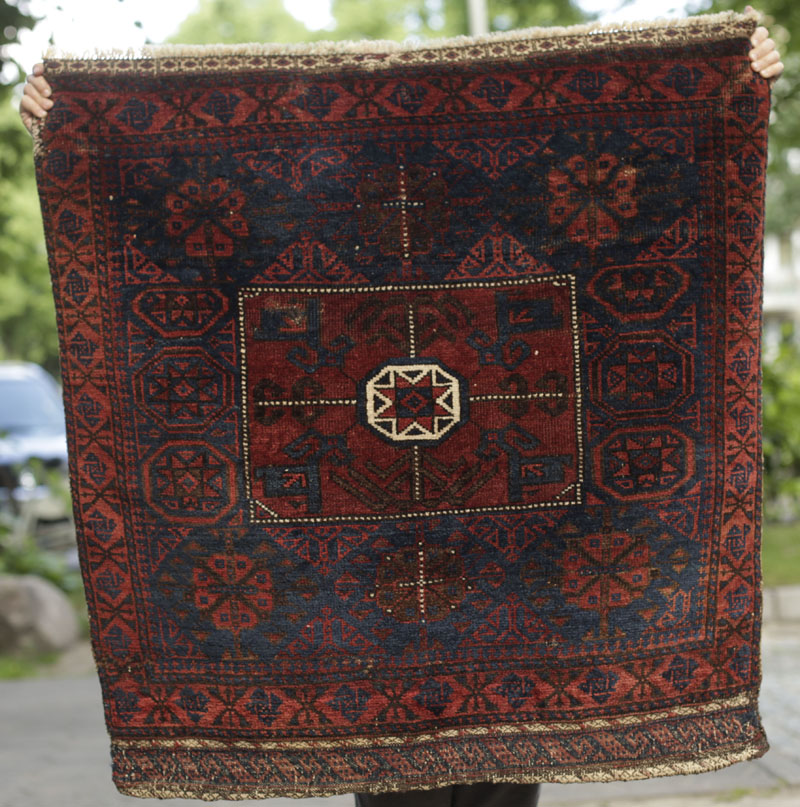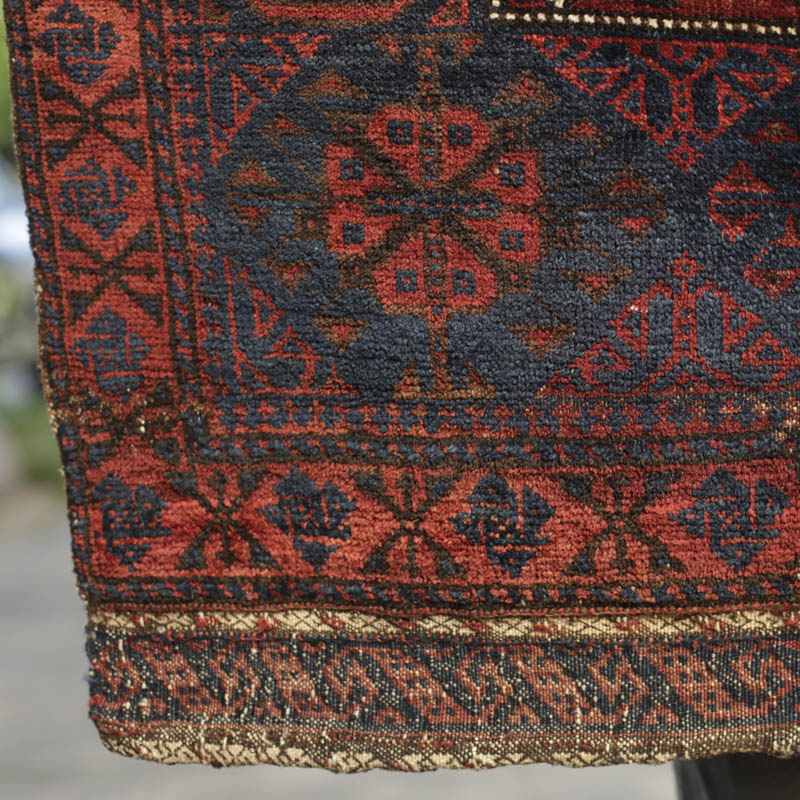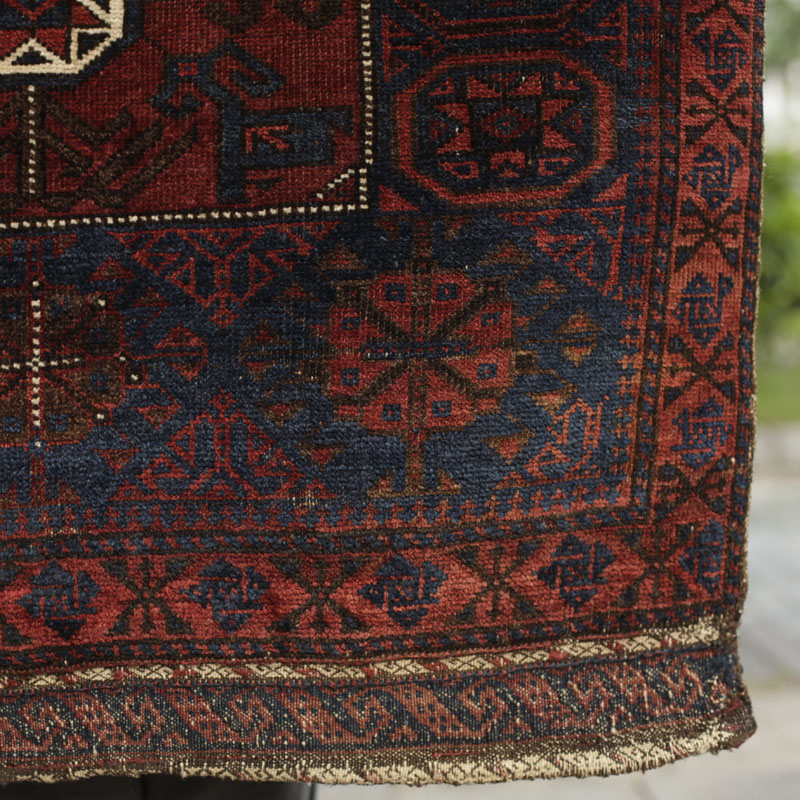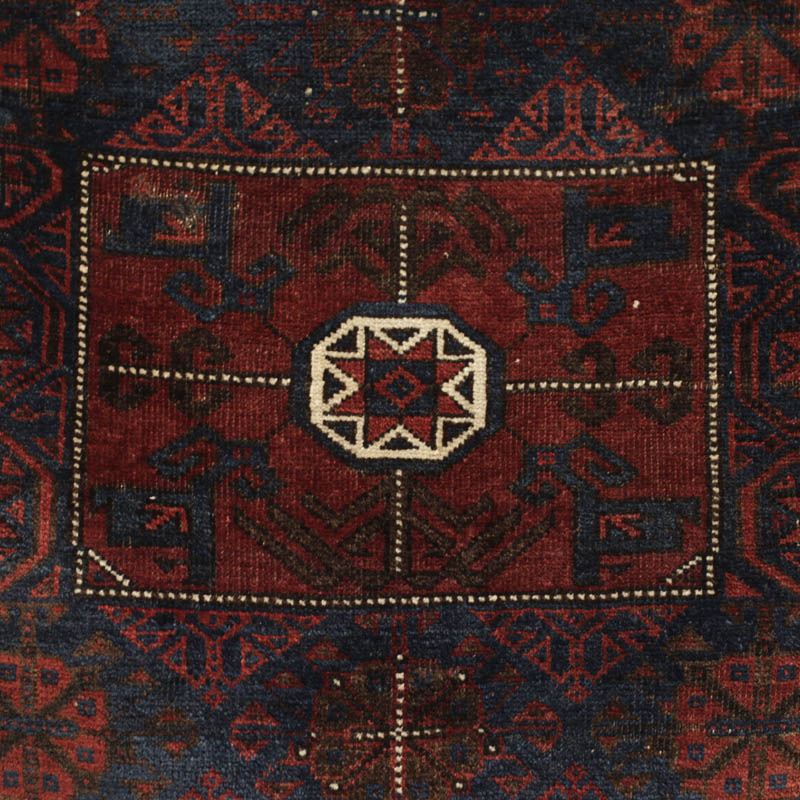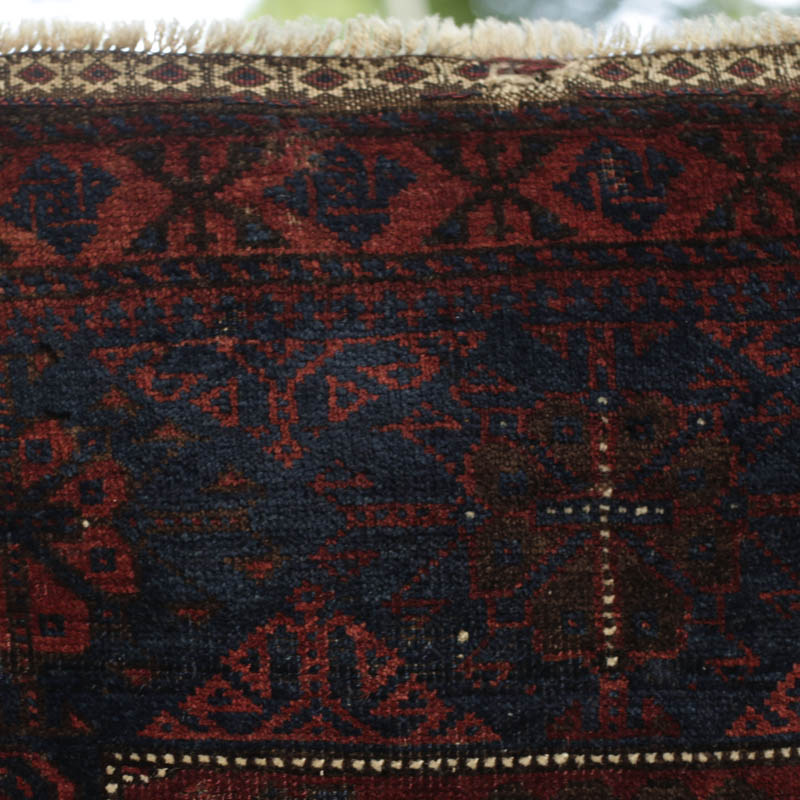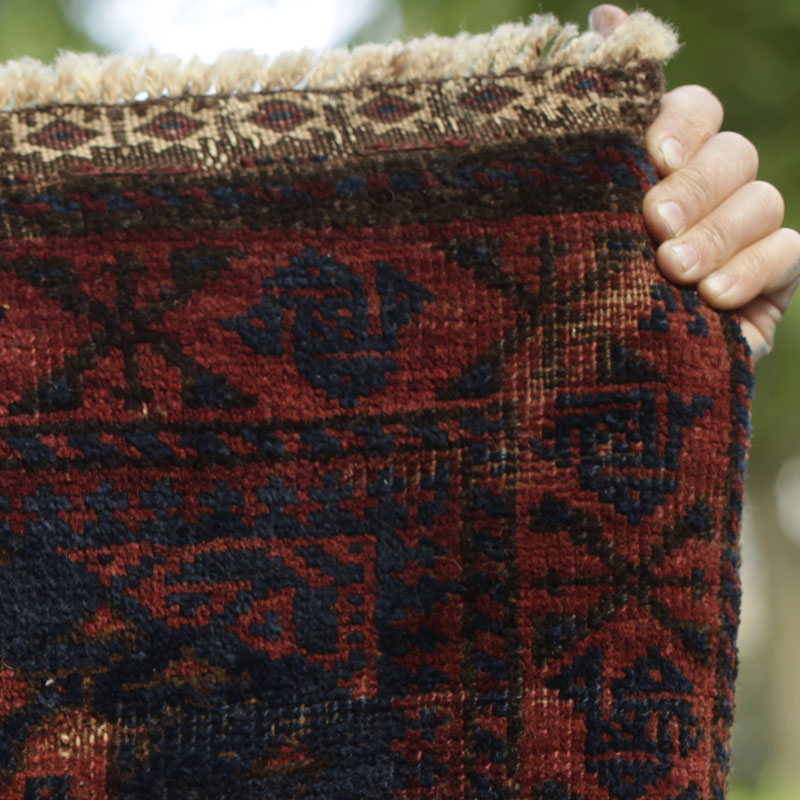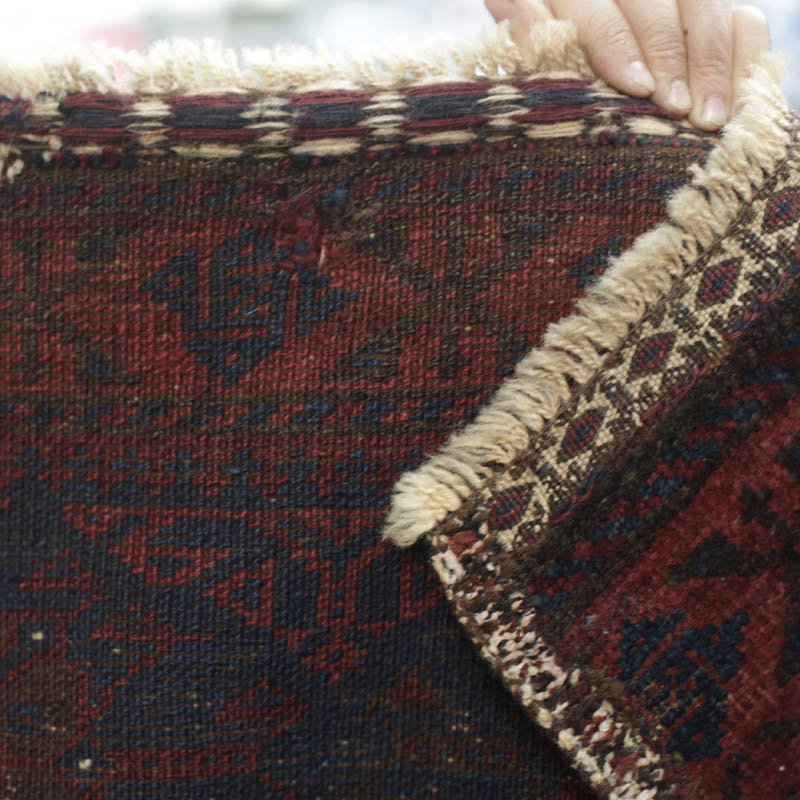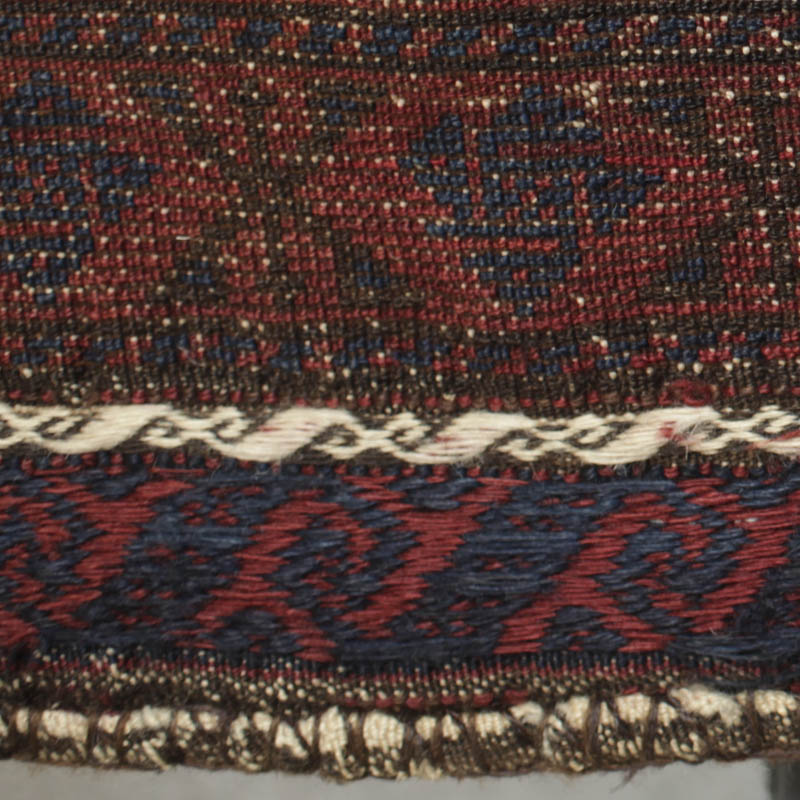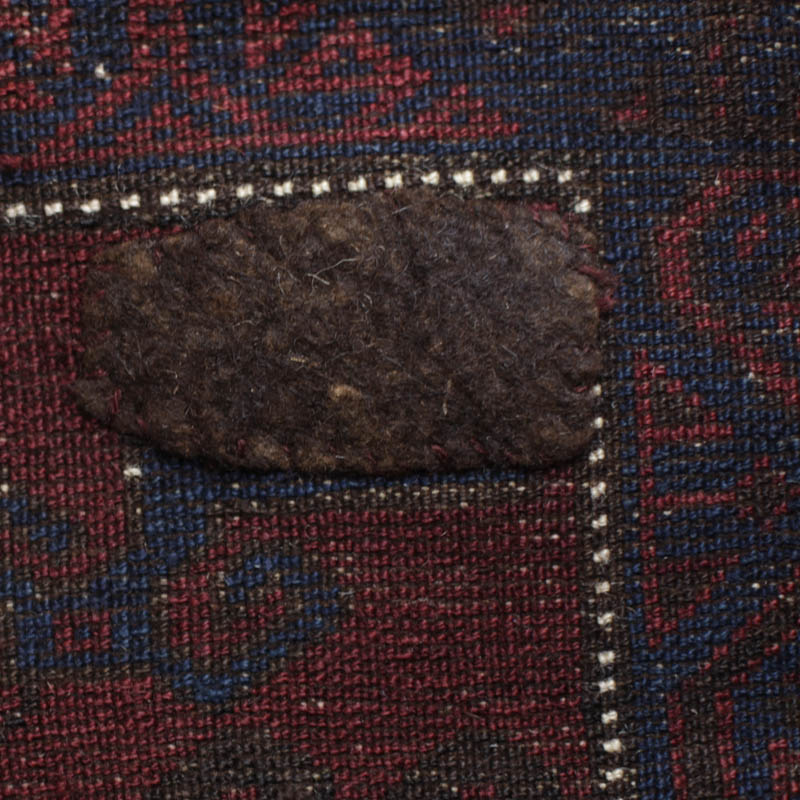Click on image to view in larger size.
See image in extra large size (opens jpg in same window) (2.8 MB).
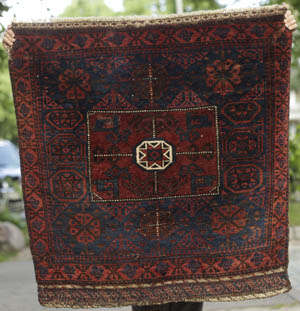
This is a very large and somewhat sombre bag face, Khorassan Baluch type, possibly Timuri (compare it to a similar, sightly less squarish piece in Rippon Boswell's 2011 spring auction). Probably made around 1880-1910.
The piece is dominated by the white star set in an octagon in its centre, the cross radiating outwards (and finding an extension in the rosettes at top and bottom which also have a few while highlights, as if stardust had spilled over).
The elements of the central field around the star remind of Turkmen motifs, for example, in Tekke guls. Strange the small brown C-shaped elements aligned on the horizontal axis, and the brown 'spider legs' extending from the vertical axis above and below the central motif.
Most patterns are hard to see as so often on old Baluch rugs: red, blue and brown are all quite dark. So it depends on the light how visible the pattern becomes. I guess direct sunlight brings them out best.
The top and bottom of the wide main border differ from the sides: they alternate between round rosettes beset with hooks, and triangular shapes (halfs of intricate diamonds) extending inwards from the edgesn and carrying an internal structure based on hooks, Somehow the diamonds look like part of an endless repeat that would extend beyond th confines of the main border.
Wedged between the dominating horizontal main borders, the vertical main borders show three octagons filled with small symmetrically arranged geometric shapes, the top octagon being squashed (a miscalculaton of the weaver since the regularity and balance of the central field seems to have overridden the fact that last octagons did not quite fit in).
The outer border is also very interesting: X-shapes with a vertical bar going through their centre alterate with a curious form that may be called a 'windmill': a tiny central checkerboard square with arms extending in all four directions that hold a triangle (may also be seen as hooks or even flags), so the resulting pattern roughly forms a diamond. These patterns, intricate as they are, are not always built up quite in the same way, which lends pleasing internal variation to the design (obviously hard to notice unless yu really delve into it).
A very nice feature are the intricate ends executed in weft-float brocading: a wide meander in red and blue at the bottom, right above it a thin white and red stripe with a very delicate hook design, and at the top, a row of diamonds inside of a white jagged / star-shaped form on a brown background.
It is quite surprising what amount design intricacy is packed into this big and at first sight gloomy looking bag face!
The bag face is square, the dimensions are 2.8ft x 2.8ft (86cm x 87cm). No warp depression, asymmetrical knots open to the left, a nice soft and flexible handle, shiny wool. Ivory wool warps, thin brown double wefts. The knot count is 36/10 cm vertical, 30/10 cm horizontal = 1080 knots per dm2. Translated into kpsi, this is about 9.v, 8.h = 72 kpsi.).
A very limited palette of clearly all organic dyes: the red is a dark, slighly brownish madder, then there is a very dark indigo blue with a beautiful abrash across the height: going from very dark at the top to slightly lighter at the bottom; and finally, you find a dark brown and ivory white.
Structurally sound and complete. Good pile apart from some areas of old moth damage (see images). An area near the outer corner of the top left quadrant of the central field has a patch of dark brown felt sewn to it, looks like an old repair meant to stabilize some former tear or similar. The front shows two fingernail-sized areas of darning with a thread colour that blends in well. The top stripe of weft-float brocading also has an area of damage near the centre (see images). Ends are secured, the bottom edge where the central piece of the original double bag has once been cut off has been sewn into a kind of thick seam. While not very dirty, the bag face might benefit from a gentle wash.
All photos are taken in subdued sunlight (slightly overcast).
